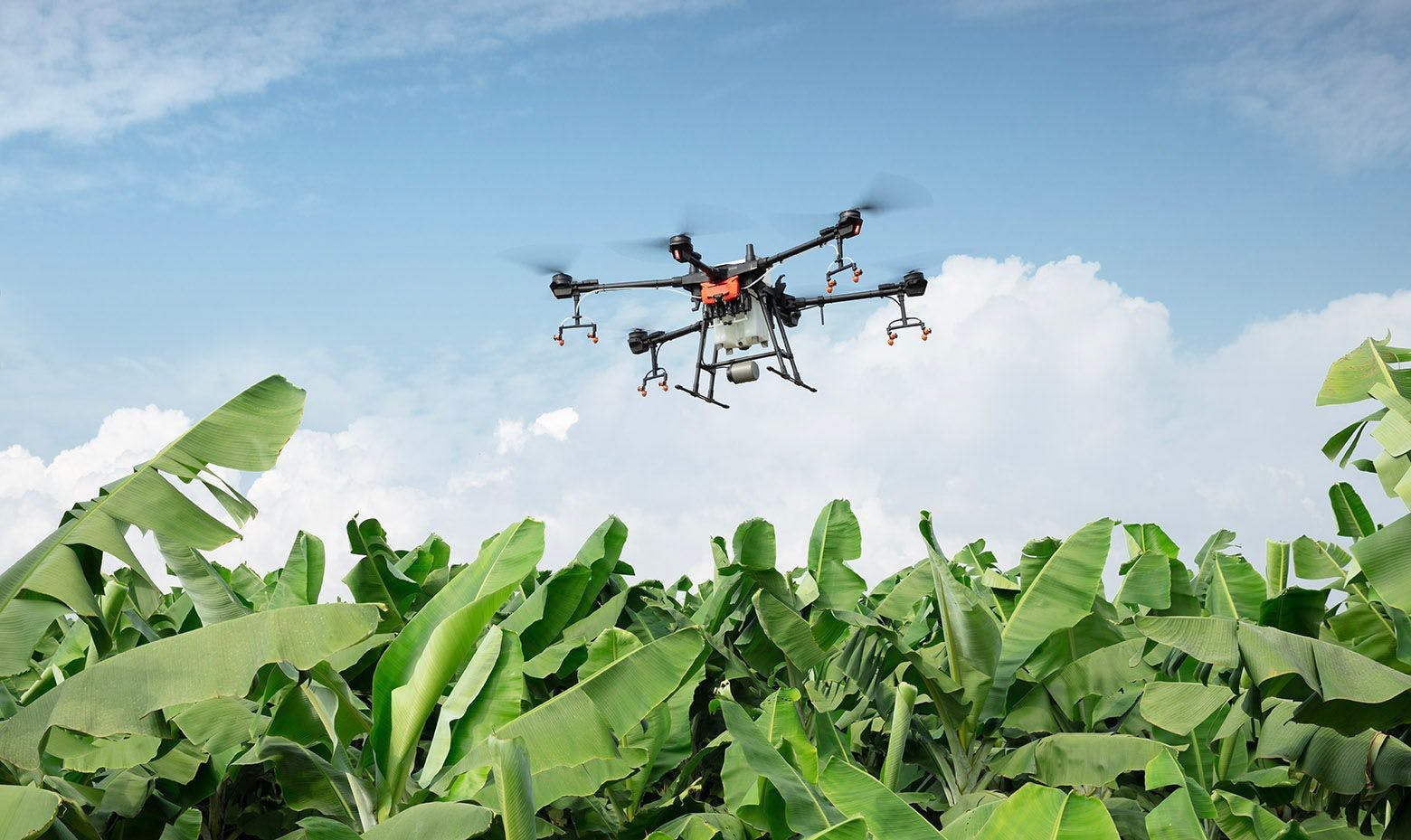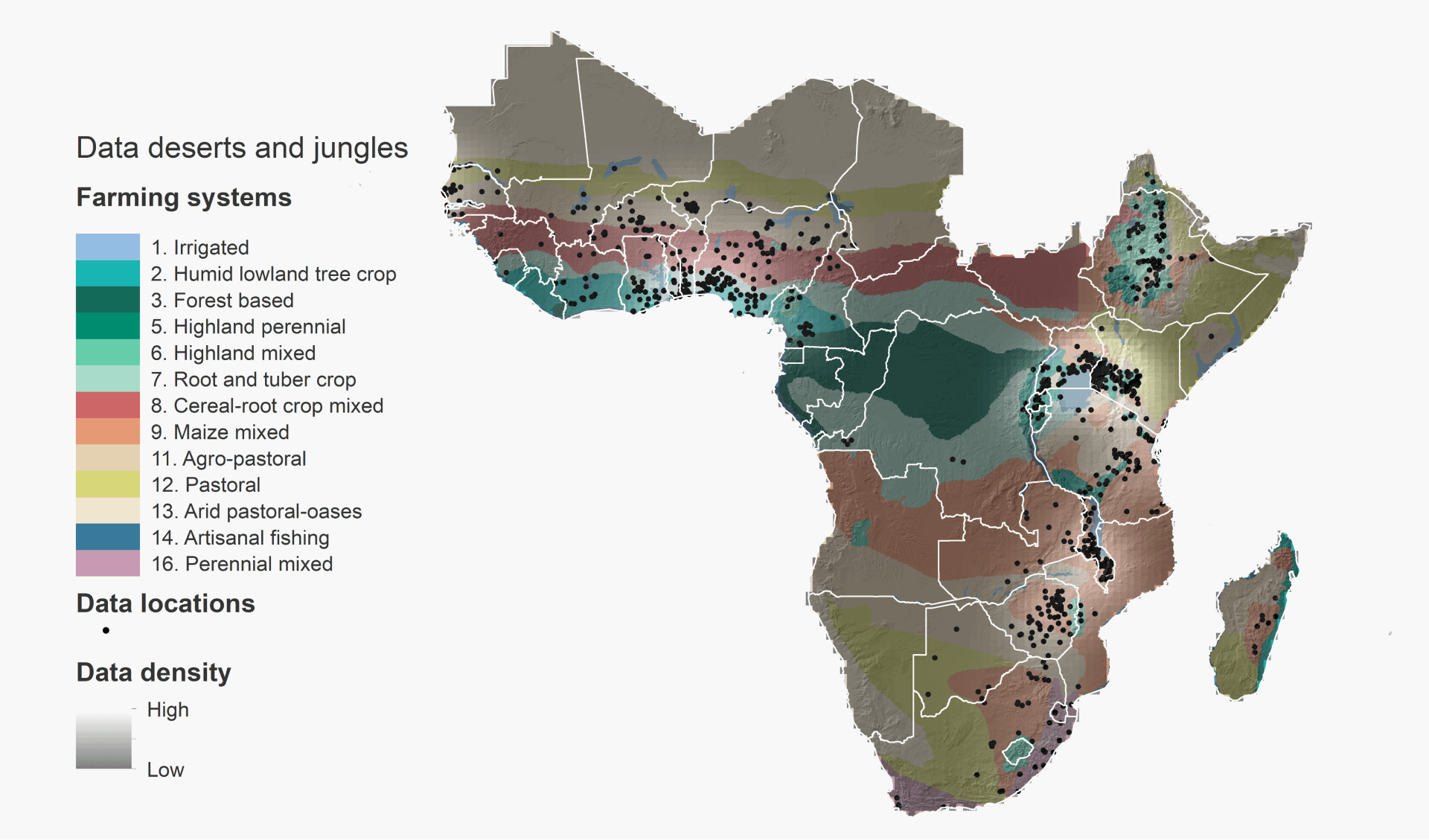Introduction
Since the 1970s, thousands of agricultural trials and research studies have been conducted in Africa, testing the ways in which changes in farm management practices lead to changes in yields, farmers’ incomes or soil health. This research forms the basis of our knowledge of the adaptation options that will work in different locations, both now and under different climate change scenarios (Rosenstock et al., 2016). However, the research is not evenly distributed across the continent. When we map where those studies have been undertaken, we can see areas in which it is densely clustered (“data jungles”) and large areas where there has been virtually no research (“data deserts”).

About 25% of the agricultural research in Africa has been undertaken in the maize-mixed farming system
DATA JUNGLES
Several countries are rich in research data, including Nigeria, Ethiopia, Kenya, Malawi and Zimbabwe, reflecting the history of agricultural research on the continent (Roseboom and Flaherty, 2016). About 25% of the agricultural research in Africa has been undertaken in the maize-mixed farming system, semi-arid systems where maize is the staple crop, but where other crops and livestock are also produced.
This wealth of knowledge is also reflected in the proportion of data on maize, which accounts for 45.6% of the available agricultural research data across the continent. We also have a good deal of knowledge about agropastoral systems, which tend to be found in semi-arid areas.

Map 1 Data deserts and data jungles
Around three-quarters of the available data contains information on nutrient management practices
Another well-studied agroecological zone in Africa is the highland perennial system, characterized by diverse crops such as banana, coffee, tea, and dairy production. This system supports the highest rural population density of any farming system in Africa and more than 15% of the available research has been done in this system.*
We know a lot about some adaptation options and agricultural practices. Around three-quarters of the available data contains information on nutrient management practices, particularly the use of inputs such as inorganic and organic fertilizers. Often, these practices are undertaken in combination with other technologies. Practices that focus on improving soil health, such as mulching, reduced tillage, or intercropping also make up a large portion of our knowledge base, at 46% of available data.
Agricultural research has focused on cereal crops, neglecting others that are critical for smallholder nutrition and food security
DATA DESERTS
Despite the wealth of agricultural data available in some parts of Africa, there are still large gaps, particularly for some farming systems. While a large proportion of Africa’s population lives in humid coastal and lowland areas, farming systems in these areas represent just 13.5% of the available data.
Key staple crops in these systems are also under-represented, with cassava accounting for 3% of the data and bananas less than 0.1%. Much of the agricultural research has focused on cereal crops, neglecting others that are critical for smallholder nutrition and food security. Vegetables comprise only 2% of the available data, with the majority of that data focused on marketable vegetables such as tomato and onions. Indigenous vegetables or other horticultural crops with high nutritional value and that women farmers generally have more involvement with (World Bank/FAO/ IFAD, 2009) are virtually absent from the research.
Livestock accounted for less than 3% of the available data
Livestock is another critical component of many smallholder agriculture systems, providing a key source of nutrition, income, and labor saving for households. Livestock systems are also threatened by climate change (Thornton et al., 2009). Despite their importance in smallholder agriculture, livestock accounted for less than 3% of the available data, with cattle and goat production comprising half of that information and milk and eggs about a quarter each.
Data is largely concentrated in a few key commodities, such as maize, and in semi-arid systems
TARGETING KNOWLEDGE GAPS
There is a wealth of data available on the performance of many practices and technologies for improving agricultural productivity and adapting to climate change in Africa. However, that data is largely concentrated in a few key commodities, such as maize, and in semi-arid systems. Millions of smallholder farmers are located in “data deserts” where there is little information available on the key crops and the key environmental challenges they face.
Future research should target these knowledge gaps and focus on under-studied farming systems, nutritionally critical crops and livestock, as well as crops more often thought of as “women’s crops.”